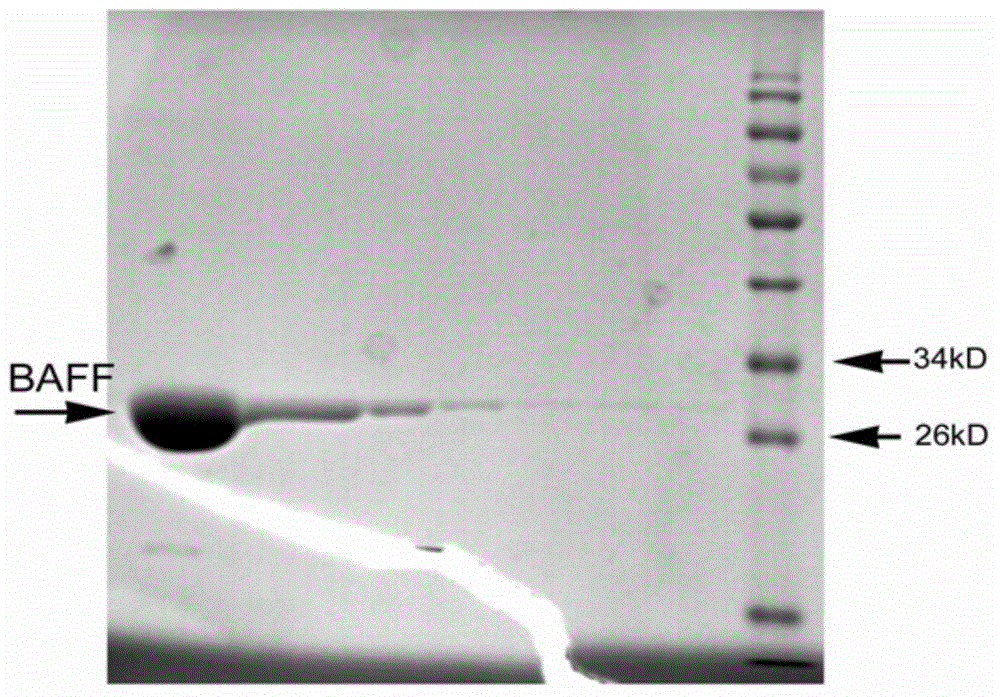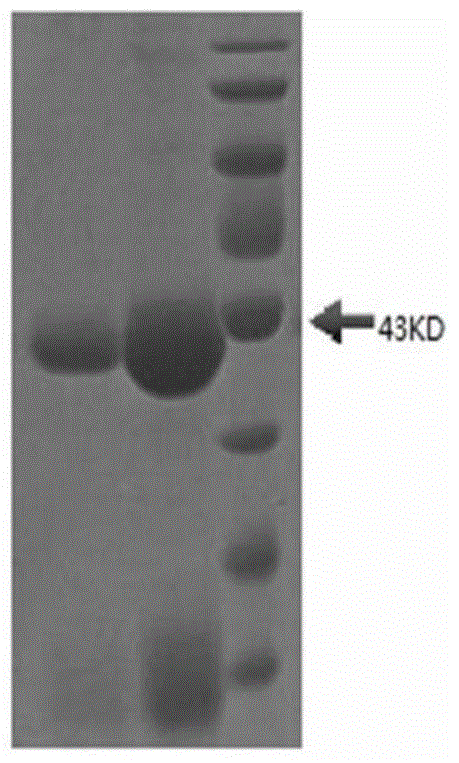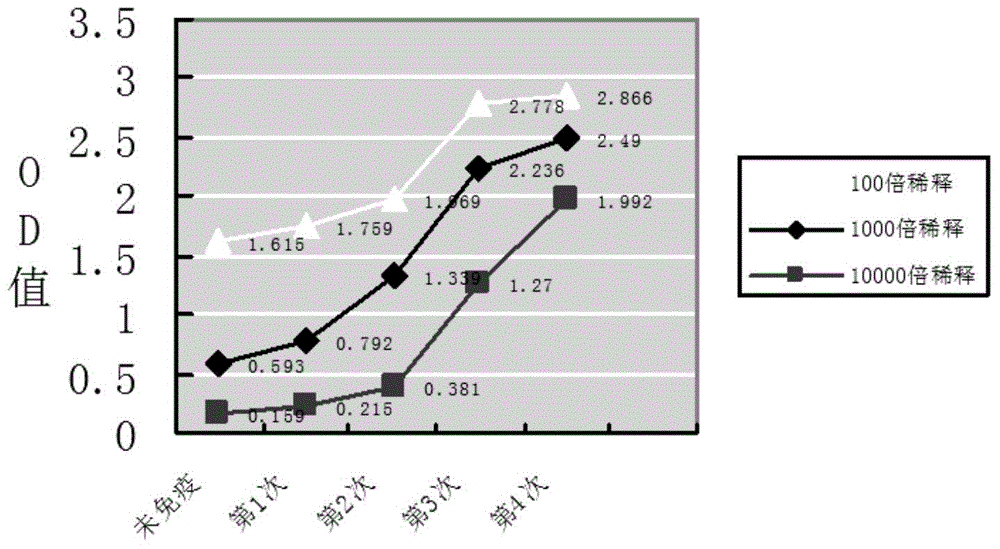Nanometer antibody for resisting B cell growth stimulating factor and use thereof
A nano-antibody and growth-stimulating technology, which is applied in the direction of anti-receptor/cell surface antigen/cell surface determinant immunoglobulin, antibody, anti-animal/human immunoglobulin, etc. It can solve the problems that there are no nano-antibody reports yet , to achieve the effect of inhibiting the proliferation or survival of B cells
- Summary
- Abstract
- Description
- Claims
- Application Information
AI Technical Summary
Problems solved by technology
Method used
Image
Examples
Embodiment 1
[0053] Example 1: Expression of BAFF extracellular segment protein
[0054] 1. Fishing for sBAFF gene: Take normal human venous blood, and extract peripheral blood mononuclear cells (PBMC) according to conventional methods. The extraction of RNA was carried out according to the instruction of Invitorgen Company. 3ug RNA was reverse-transcribed to prepare a cDNA template, which was used as a template to amplify the BAFF gene.
[0055] The primer sequences are:
[0056] 5'CGGGAATTCCTGGTGCCACGCGGTGCCGTCAGGGTCCAGAAG3' (SEQ ID No. 3)
[0057] 5'CCCAAGCTTTCACAGCAGTTTCAATGC3' (SEQ ID No. 4)
[0058] PCR reaction conditions:
[0059]
[0060] 2. Construction of expression vectors: PCR amplification products were separated and recovered by agarose gel electrophoresis, digested with EcoRI (BioLab Company), HindIII (BioLab Company), and treated with the same enzyme as vector pET-30a (Sigma) by 3 :1 end ratio for cohesive end ligation. The ligation product was transformed into co...
Embodiment 2
[0065] Embodiment 2: Construction of anti-BAFF specific nanobody library
[0066] 1. Immune the alpaca, and analyze the production of nanobodies by enzyme immunoassay.
[0067] A total of 1.5 mg of antigen was injected subcutaneously at multiple points on the neck and back of the alpaca, and Freund's adjuvant was added, and the immunization was divided into 4 times. The absorption of the injected mass was followed up to confirm the correct immunization. Serum antibody titers were determined one month after the first immunization ( figure 2 ); after immunization, the interval between each immunization was halved, and the titer was determined. Use Protein G column and affinity chromatography to separate the serum one week after the fourth immunization, and detect the heavy chain antibody production and antibody titer by ELISA. After the fourth immunization, the titer of alpaca immune serum can reach 1: 10000. ( image 3 ).
[0068] 2. Isolation of Alpaca Peripheral Blood L...
Embodiment 3
[0098] Embodiment 3: the acquisition of anti-BAFF nanobody
[0099] 1. Screening of anti-BAFF-specific nanobodies
[0100] Using biotinylated BAFF antigen, the anti-BAFF nanobody was screened from the phage library by streptavidin magnetic beads method. The biotin-labeled BAFF antigen was mixed with the phage antibody library in proportion, and reacted overnight at 4°C. Add the antigen-phage antibody complex into the EP tube containing streptavidin magnetic beads, and roll and rotate for 0.5h to fully combine the magnetic beads with the biotin-labeled antigen-phage antibody complex. After each washing with PBST (0.05% T20) and PBS for 10 times, the phages were eluted with TEA and allowed to stand at room temperature for 10 minutes. 1M Tris-HCl neutralized TEA, kept on ice. Infect the bacteriophage with semi-logarithmic phase growth TG1, take appropriate amount of bacterial solution and dilute it, spread it on AMP / LB plate, incubate at 32°C, measure the titer of the eluent, ...
PUM
| Property | Measurement | Unit |
|---|---|---|
| purity | aaaaa | aaaaa |
| affinity | aaaaa | aaaaa |
Abstract
Description
Claims
Application Information
 Login to View More
Login to View More - R&D
- Intellectual Property
- Life Sciences
- Materials
- Tech Scout
- Unparalleled Data Quality
- Higher Quality Content
- 60% Fewer Hallucinations
Browse by: Latest US Patents, China's latest patents, Technical Efficacy Thesaurus, Application Domain, Technology Topic, Popular Technical Reports.
© 2025 PatSnap. All rights reserved.Legal|Privacy policy|Modern Slavery Act Transparency Statement|Sitemap|About US| Contact US: help@patsnap.com



